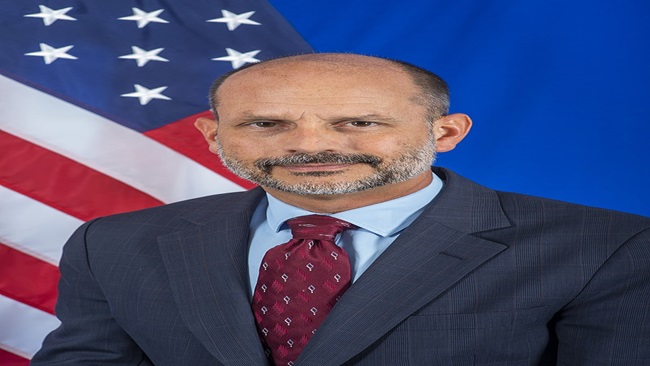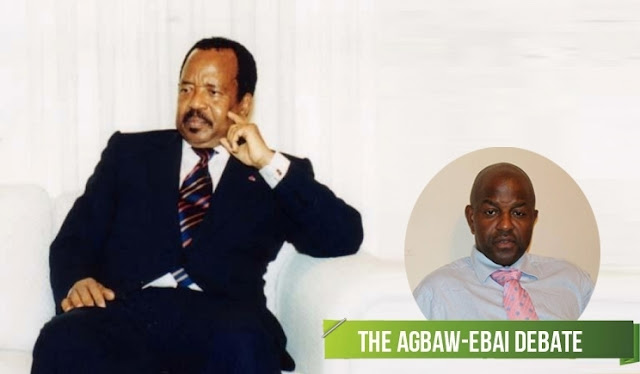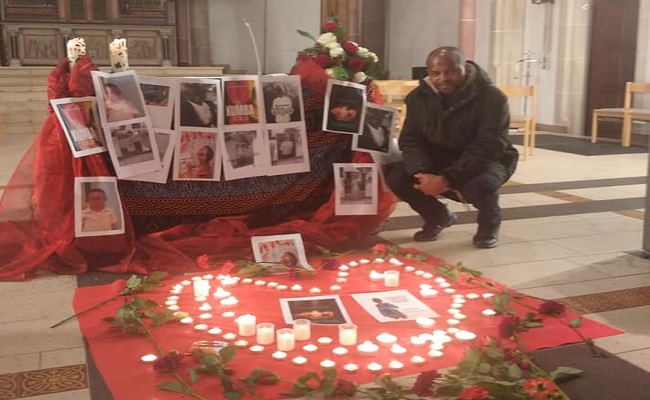Privacy Overview
This website uses cookies so that we can provide you with the best user experience possible. Cookie information is stored in your browser and performs functions such as recognising you when you return to our website and helping our team to understand which sections of the website you find most interesting and useful.


















3, January 2024
US: Ambazonia asylum seekers faced severe abuse in ICE detention under Trump 0
For C.M., a member of Cameroon’s English-speaking minority, life in exile is a daily struggle.
Years ago, he was one of some 500,000 people displaced by a government crackdown on English speakers in the West African country. The violence, known as the Anglophone crisis, left hundreds of people dead and deepened festering divisions.
Seeking asylum, a legal status for migrants fleeing persecution, he made his way to the United States in 2019, only to be detained for more than a year and deported back to Cameroon — where he was once again detained, before bribing his interrogators and fleeing to Ghana, according to his account in the lawsuit.
C.M., who spoke on the condition that he be identified by his initials to protect his safety, is one of seven plaintiffs across three federal lawsuits filed against the U.S. Department of Homeland Security and immigration authorities that allege African migrants seeking asylum faced racist abuse in U.S. detention facilities. Two of the suits allege hours-long confinement that amounted to torture in a full-body restraint called the “Wrap.”
An Immigration and Customs Enforcement (ICE) spokesperson said in an email that the agency does not comment on ongoing or pending litigation.
Living on the outskirts of Accra, Ghana’s capital, C.M. took on menial jobs and relied on the benevolence of advocates for deported asylum seekers. He grappled with the trauma of his mistreatment by authorities on two continents. And he said his deportation from the United States made him feel like an enslaved person.
“Our forefathers were taken from Africa in chains, and I was brought to Africa in chains,” he said, in an interview in his small rented apartment.
Four Cameroonian men seeking asylum, including C.M., were held for up to three years by ICE between 2018 and 2020, according to a suit filed in September in U.S. District Court for the District of Columbia.
In 2020, the suit alleges, ICE sought to deport the men after Cameroonians at a Louisiana detention facility went on hunger strike to protest alleged mistreatment, including solitary confinement and the withholding of water.
While awaiting deportation, the men were detained in a device called the Wrap — “a temporary restraint system designed for emergency stabilization only,” according to the suit. Though people detained in the Wrap are meant to sit upright and remain free to breathe, the device was not used correctly, the suit alleges.
“Plaintiffs were restrained in The WRAP to silence them and other migrants and punish them for previous protests,” according to the suit. “They were left alone in the device for hours in some instances as they tried to alert officers to their medical issues and pain from the tightened strap folding their bodies into an acute angle stress position.”
C.M. and two other men were deported, upon which they had to live in hiding, the suit says. The suit seeks unspecified damages and the renewal of the men’s asylum claims. C.M. recently received a United Kingdom visa, according to his lawyer, and has traveled to Britain.
Had C.M. and his co-plaintiffs who were deported sought asylum in the United States just a few years later, they would have likely faced different circumstances.
In 2022, the Biden administration granted Cameroonians temporary protected status — a measure that the Trump administration fought to curtail that granted temporary permission to remain in the United States for migrants from select countries in the throes of war or disaster. Under Trump, the asylum process slowed to a crawl.
ICE’s use of the Wrap went against the manufacturer’s guidelines and was “unjustified and inhumane,” said Fatma E. Marouf, a law professor at Texas A&M University Law School, whose civil rights and immigration rights law clinics helped bring the litigation. “Our clients fled persecution in Cameroon and Uganda only to be subjected to severe physical and psychological harm in ICE custody,” she said.
“The treatment of Black migrants needs to be part of the broader conversation about race in this country,” she said.
Allegations in the suit align with findings by rights groups. In a report released in 2022, Human Rights Watch found that dozens of Cameroonians reported encountering “excessive force, medical neglect, and other mistreatment,” in ICE custody, only to face a range of abuses, including forced disappearances, torture and rape, upon deportation back to Cameroon.
“The US government utterly failed Cameroonians with credible asylum claims by sending them back to harm in the country they fled, as well as mistreating already traumatized people before and during deportation,” Lauren Seibert, a researcher at the New York-based rights group, said in a statement at the time.
A separate suit concerning an asylum seeker from Uganda filed in September by some of the same attorneys behind the Cameroon suit echoed the claims.
Steven Tendo sought asylum in 2018 after being repeatedly arrested and tortured by Ugandan authorities, according to the suit filed in U.S. District Court for the District of Vermont. During one torture session in Uganda, according to the suit, two of his fingers were cut off.
When Tendo arrived in the United States in 2018, he faced further abuse while detained. Officials wouldn’t give him his diabetes medication. He was denied cataract surgery for five months — and was held in solitary confinement after speaking out about poor conditions, he alleges in the suit.
When officials attempted to deport Tendo, he faced mistreatment, including detention for hours in the Wrap on two occasions, the suit says. The first time officials used the Wrap, according to the suit, Tendo was not permitted to use the restroom and soiled himself.
“The strap that connected his torso to his lower legs, just above his ankles, was cinched up to an angle of around 45 degrees, making it very hard for him to breathe, causing extreme anxiety, and inflicting excruciating pain,” the suit alleges, as “part of a practice of abuse and discrimination by ICE.”
“Black asylum seekers from Africa and the Caribbean have repeatedly reported experiencing serious impediments to seeking asylum in the U.S. and harms in immigration detention, including racist targeting, physical and verbal abuse, and higher rates of detention, solitary confinement, and denial of asylum claims,” the suit alleges.
After dozens of members of Congress advocated for his release, Tendo, a Christian pastor, was freed in 2021. He is living in Vermont, awaiting a final decision in his asylum case, he said.
A critic of Uganda’s autocratic government, Tendo said he left after officials killed his brother. He came to the United States after flying to Brazil and making his way north to the Mexican border. He was detained by ICE for 26 months in conditions he said were “subhuman.”
“Today, if you asked me to choose between being in prison for 26 months in the U.S. and going back to my country for torture,” he said, “you can take me back.” U.S. detention “is the most dehumanizing place that I have ever seen on the planet.”
The lawsuits, which follow still another filed by Cameroonian nationals in August alleging abuse in detention, seeks compensatory damages and a declaration that the DHS and ICE violated their own policies, among other relief.
In response to a complaint by advocates for Tendo, the Department of Homeland Security’s Office for Civil Rights and Civil Liberties said it had issued formal recommendations to ICE “related to lack of policy, oversight, documentation, justification, lack of recording, training, use of the WRAP at detention facilities and during transport,” according to a letter from the office published by VTDigger, a Vermont investigative news outlet.
Charles Hammond is the CEO and president of Safe Restraints, the California company that sells the Wrap and trains people on how to use it. In an interview, he said that he was unfamiliar with the lawsuits’ allegations — but that the Wrap was designed to protect all people in conflict situations.
ICE had become one of the company’s top customers, the Guardian reported in 2022.
Hammond declined to comment on how specific agencies use the Wrap. However, he said that it is meant to end a conflict quickly and “control somebody in a manner that allows them to breathe and receive medical and mental health care.” He also said he was proud of the company’s 27-year track record.
“It’s not an agitation device — it’s a de-escalation tool,” he said.
Culled from The Washington Post